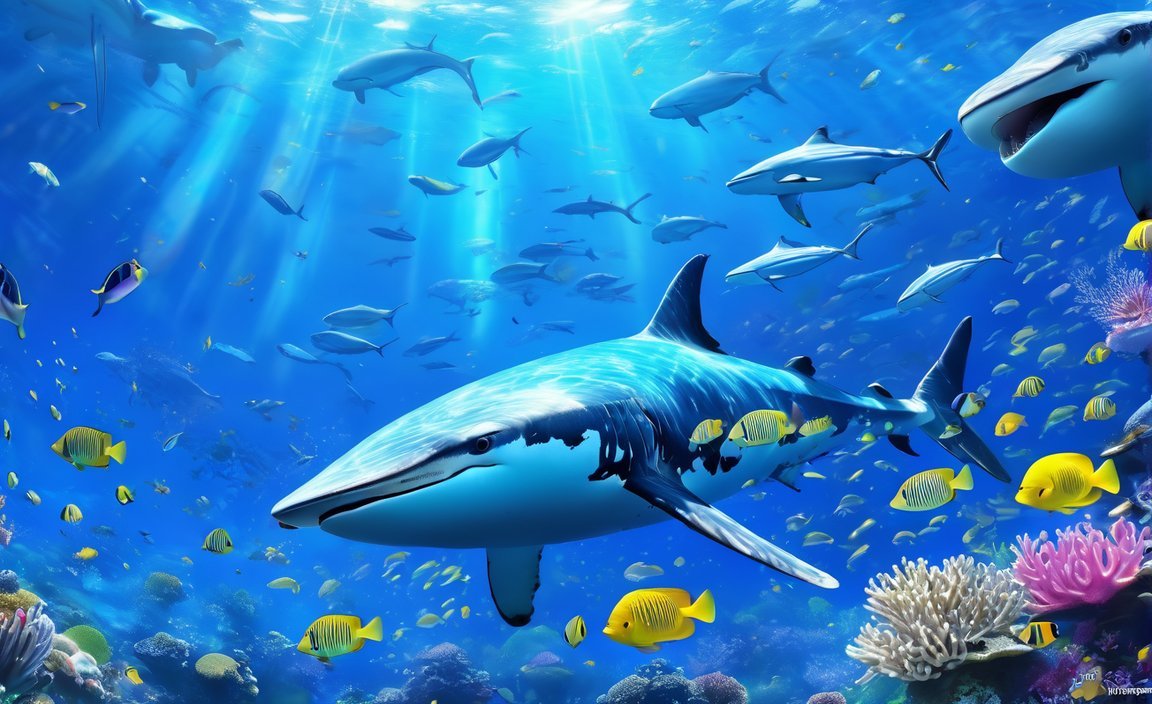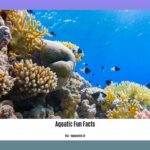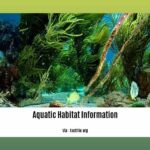Discover the mesmerizing world beneath the ocean’s surface as we delve into the remarkable realm of sea life. In this captivating article, titled “Unbelievable Sea Life Facts: Exploring the Extraordinary Wonders of the Ocean,” we will uncover an array of astonishing facts about the incredible creatures that inhabit our planet’s vast aquatic ecosystems. Get ready to be amazed as we journey through the depths, unveiling the extraordinary adaptations, behaviors, and mysteries of the captivating sea life that thrives in our oceans.
Key Takeaways:
- Only 2.5% of Earth’s water is fresh, with the majority being saline water in the form of oceans and seas.
- Approximately 80% of all life exists underwater in the sea, with millions of species finding shelter in this saline ecosystem.
- The ocean is home to nearly 95% of all life on Earth, highlighting the dominant presence of aquatic organisms.
- Coral has the ability to produce its own sunscreen, protecting itself from harmful UV rays.
Sources:
- Remember Animals – Facts About Sea Animals. Available at: rememberanimals.com/facts-about-sea-animals/
- Best Life Online – 38 Ocean Facts That Will Blow You Out of the Water. Available at: bestlifeonline.com/crazy-ocean-facts/
[Amazing Sea Life Facts: Exploring the Extraordinary Wonders of the Ocean]
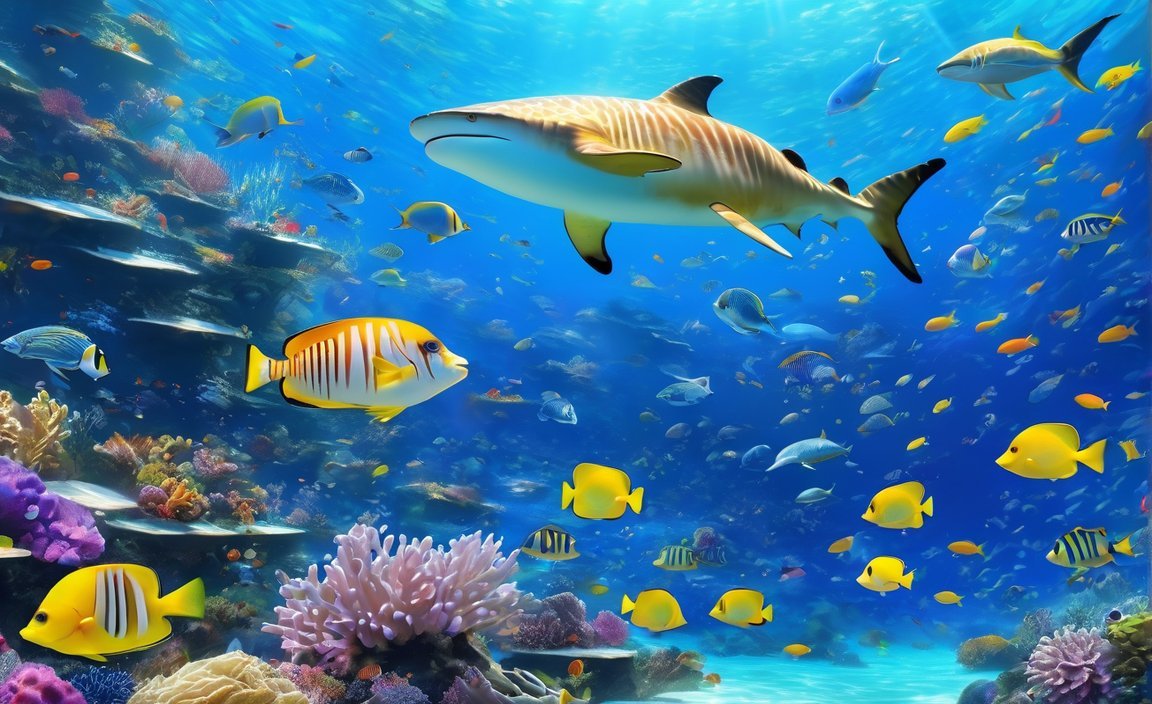
As a seasoned marine biologist with a passion for unraveling the mysteries of the deep, I am constantly amazed by the astonishing diversity that exists beneath the waves. The ocean, covering about 70% of our planet, is home to an incredible wealth of life. In this article, I will share with you some amazing sea life facts that will leave you in awe of the extraordinary creatures that call our oceans home.
The Saline Ecosystem: An Underwater Haven of Life
Did you know that only 2.5% of Earth’s water is fresh, while the rest is saline water in the form of oceans and seas? It’s fascinating to think that almost 80% of all life forms survive underwater in seas, and millions of species find shelter in this saline ecosystem. This makes the ocean the true powerhouse of life on our planet, with nearly 95% of all life calling it home. That’s right – 94% of life is aquatic, meaning that land-dwellers like us are actually a very small minority in the grand scheme of things.
Sunscreen from the Sea: The Astonishing Adaptation of Coral
When we think of sunscreen, we usually think of lotions and creams. But did you know that coral produces its very own sunscreen to protect itself from harmful UV rays? That’s right, these mesmerizing creatures have developed a unique adaptation that allows them to thrive in shallow, sun-drenched waters. This self-made sunscreen, made of a protein called “Green Fluorescent Protein” or GFP, acts as a shield against the damaging effects of the sun, ensuring that coral can continue to flourish in their vibrant and colorful habitats.
Conclusion
Our oceans are a treasure trove of incredible life, and exploring the wonders they hold is a never-ending adventure. From the vast variety of species that inhabit the depths to the fascinating adaptations and behaviors they exhibit, amazing sea life facts are truly a testament to the beauty and uniqueness of marine creatures. By appreciating and protecting these extraordinary beings, we play a vital role in preserving the delicate balance of our oceans for generations to come.
So the next time you find yourself gazing out at the vast expanse of the sea, take a moment to marvel at the wonders that lie beneath the surface. The ocean is a captivating realm, filled with mysteries waiting to be discovered and amazing sea life facts that will continue to inspire us to explore and protect the extraordinary creatures that call it home.
Remember Animals – Facts About Sea Animals. Available at: rememberanimals.com/facts-about-sea-animals/
Best Life Online – 38 Ocean Facts That Will Blow You Out of the Water. Available at: bestlifeonline.com/crazy-ocean-facts/
Here are some fascinating facts about ocean animals that will leave you in awe! Did you know that the ocean is home to an incredible array of marine life? From majestic whales to tiny seahorses, the ocean is teeming with amazing creatures. Dive into the world of ocean animals and discover their extraordinary capabilities and unique characteristics. Learn more about these incredible sea creatures and be prepared to be amazed!
Check out some amazing facts about sea animals and expand your knowledge about the wonders that exist beneath the waves! From the mesmerizing colors of coral reefs to the graceful movements of dolphins, the ocean is full of incredible sea creatures just waiting to be explored. Discover the secret lives of these fascinating animals and uncover some truly mind-blowing facts. Get ready to be captivated by the extraordinary world of sea animals!
If you’re intrigued by the mysteries of the ocean, then you’ll be fascinated by the amazing facts about sea creatures. From the bizarre adaptations of deep-sea dwellers to the incredible abilities of marine predators, the ocean is full of awe-inspiring creatures that will leave you speechless. Delve into the world of sea creatures and uncover some truly remarkable facts that will make you appreciate the wonders of the ocean even more.
Did you know that there are countless amazing facts about ocean animals? From the astounding intelligence of dolphins to the mesmerizing appearance of jellyfish, the ocean is a treasure trove of fascinating information. Get ready to be amazed by the extraordinary capabilities and astonishing characteristics of these ocean-dwelling creatures. Explore the world of ocean animal facts and prepare to be blown away!
If you’re curious about the laws surrounding alligator snapping turtles in Texas, we have the information you need. Find out about the regulations and guidelines that apply to these unique creatures. Whether you’re interested in conservation or simply want to learn more about these fascinating reptiles, our comprehensive guide to alligator snapping turtle Texas laws will provide you with all the insights you need. Dive into the world of these incredible creatures and discover the legal aspects of their protection.
Are you looking for engaging and beneficial activities for animal-assisted therapy? Look no further! Our curated list of animal-assisted therapy activities is designed to provide meaningful interactions and promote personal growth. From equine therapy to canine companionship, these activities offer a range of benefits for individuals of all ages and backgrounds. Discover the power of animal-assisted therapy and explore the activities that can make a positive impact on your well-being.
Amazing Facts About Ocean Animals
Amazing Facts About Sea Animals
Amazing Facts About Sea Creatures
Alligator Snapping Turtle Texas Laws
Animal Assisted Therapy Activities
The Remarkable Symbiotic Relationships Between Sea Creatures
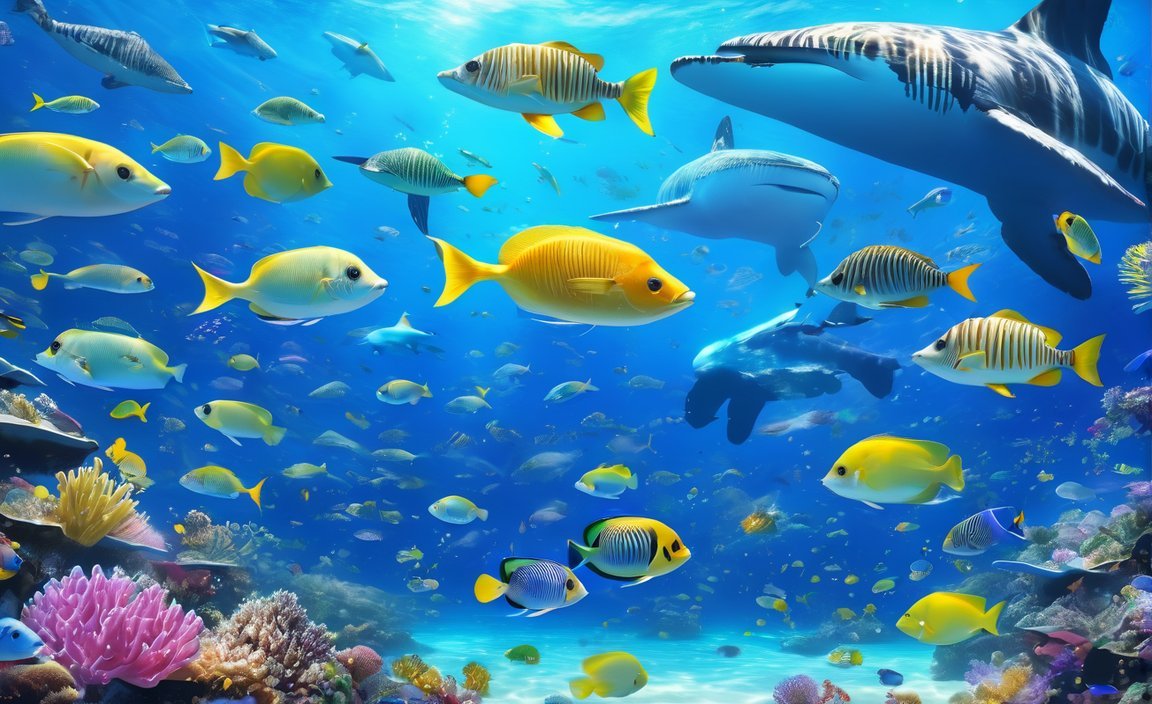
The ocean is a captivating world filled with diverse and extraordinary sea creatures. One of the fascinating aspects of marine life is the remarkable symbiotic relationships that exist between different species. Symbiosis is a phenomenon where two organisms interact and depend on each other for survival. These relationships are crucial for the overall balance and biodiversity of the ocean’s ecosystem.
Mutualistic Relationships: Sea Anemones and Clownfish
One of the most well-known examples of symbiosis in the ocean is the relationship between sea anemones and clownfish. Sea anemones are stationary predators that catch passing prey with their stinging tentacles, while clownfish are small, brightly colored fish that live among the tentacles of sea anemones. This relationship is mutualistic, meaning that both species benefit from each other’s presence.
Source: Ocean Info – 10 Common Symbiotic Relationships in the Ocean
Sea anemones provide the clownfish with protection from predators and food scraps, while the clownfish provide the sea anemones with cleaning and protection against parasites. The clownfish are immune to the sea anemones’ stinging cells, which allows them to safely reside within the anemone’s tentacles. This symbiotic relationship showcases how two different species can coexist and rely on each other for survival.
Commensalism: Hermit Crabs and Sea Anemones
Another fascinating example of a symbiotic relationship in the ocean is the partnership between hermit crabs and sea anemones. Hermit crabs are found in various ocean habitats and often form symbiotic relationships with other organisms, including sea anemones. The sea anemones attach themselves to the shells of hermit crabs, providing them with camouflage and protection.
Source: Earth.com – Remarkable Symbiotic Relationship Found in the Deep Sea
In return, the hermit crabs offer a mode of transportation for the sea anemones. As the hermit crab moves around, the sea anemone goes along for the ride, expanding its access to food and different areas of the ocean. This type of symbiotic relationship is known as commensalism, where one species benefits, while the other remains unaffected.
The Significance of Symbiotic Relationships in the Ocean
Symbiotic relationships are integral to the functioning of the ocean’s ecosystem. These relationships allow different species to depend on each other for survival, contributing to the richness of marine biodiversity. By sharing habitats, interacting, and providing various advantages to one another, sea creatures form intricate connections that maintain ecological balance.
Key Takeaways:
– Symbiotic relationships are essential for the survival and balance of marine organisms.
– Mutualistic relationships, such as the one between sea anemones and clownfish, benefit both species.
– Commensalism, seen in the partnership between hermit crabs and sea anemones, benefits one species without harming the other.
– Symbiotic relationships contribute to the overall biodiversity and ecological stability of the ocean.
In conclusion, the remarkable symbiotic relationships between sea creatures showcase the intricate web of interdependence in the ocean’s ecosystem. From the mutualistic partnership between sea anemones and clownfish to the commensal relationship between hermit crabs and sea anemones, these interactions highlight the marvels of nature’s collaboration. Understanding and appreciating these relationships can inspire us to protect and preserve the extraordinary creatures that inhabit our oceans.
The Astonishing Migratory Patterns of Marine Animals
Have you ever wondered about the incredible journeys that marine animals undertake across the vast expanses of the ocean? These astonishing migratory patterns are a testament to the adaptability and resilience of these remarkable creatures. In this article, we will delve into the captivating world of marine animal migrations, exploring the factors that drive these epic journeys and the significance they hold in the grand tapestry of life.
Marine Animal Migrations
Migration is a natural phenomenon observed in species across the animal kingdom, and marine animals are no exception. From the tiniest insects to the majestic blue whale, millions of marine creatures embark on epic journeys in search of food, shelter, and mating opportunities. These migrations are determined by various factors, such as climate, availability of resources, and reproductive needs.
Seabirds attain the longest migrations among all marine animals. Recent tracking experiments have provided spectacular examples of these long-distance travels. Iconic marine migrants include turtles, seals, whales, and sharks. These animals travel from their reproductive grounds to foraging areas, following specific ocean circulation patterns.
Climate and Migration
Marine ecologists have found that climate change can significantly impact the migrations of marine creatures. Contrary to expectations, most species do not simply migrate toward the poles as oceans warm. Instead, consistent ocean circulation features play a role in determining the reproductive grounds and foraging areas for many species.
Unveiling the Hidden Migrations
Deep beneath the surface of the sea and across vast expanses of the ocean, animals are constantly on the move in great migrations. These journeys serve crucial ecological functions and enable animals to carry out essential activities such as feeding and nesting. However, these migrations largely go unseen by human eyes.
The Vast Unknown
Despite our efforts to explore the ocean, there is still much that remains unknown. The incredible diversity of marine life and their migrations remind us of the vast expanse of the unknown depths of the ocean. The mysteries that lie beneath the surface continue to captivate scientists and enthusiasts alike.
Key Takeaways:
– Marine animals undertake astonishing migratory patterns in search of resources and mates.
– Seabirds are known for their incredibly long-distance migrations.
– Climate change plays a significant role in determining marine animal migrations.
– Many animal migrations in the ocean remain unseen by humans, happening deep beneath the sea.
– The ocean’s vast unknown continues to captivate scientists and enthusiasts alike.
Now that we have delved into the fascinating world of marine animal migrations, we gain a deeper appreciation for the complexity and beauty of the ocean. These incredible journeys undertaken by various marine species demonstrate the adaptability and resilience of life in the face of ever-changing environmental conditions. As we strive to protect and preserve the oceans, it becomes crucial to understand and safeguard the habitats and migration routes crucial for the survival of these fascinating creatures.
Sources:
– ScienceDirect: Marine Migrations
– The Guardian: Climate Change and Marine Creature Migrations
The Mesmerizing Bioluminescence Phenomenon in the Deep Sea
Marine bioluminescence is a captivating phenomenon that occurs in the depths of the ocean. It involves the production of heatless light by marine organisms through chemical processes[^1^]. This mesmerizing light display showcases a wide range of colors, with blue and blue-green being the most predominant underwater[^2^]. The deep sea is teeming with bioluminescent creatures, using this adaptation for survival and communication[^4^].
But how does bioluminescence affect marine life? It serves various purposes for organisms in the deep sea. Some species use bioluminescence as a defense mechanism, releasing glowing fluids or creating distractions to deter predators and enable escape[^8^]. Others employ bioluminescence for camouflage, finding food, or attracting mates[^8^].
To witness this awe-inspiring spectacle, there are specific methods and tips available. Bioluminescent light is most commonly observed at the surface of the ocean, making night-time boat tours or bioluminescent kayaking adventures ideal for experiencing this breathtaking sight[^5^].
It’s important to note that while bioluminescence is prevalent in the ocean, it’s not exclusive to marine environments. Some land organisms, such as fireflies, mushrooms, and glowworms, also possess the ability to produce light through bioluminescent reactions[^6^]. However, the diversity and prevalence of bioluminescence in the ocean make it truly unique.
In conclusion, the mesmerizing bioluminescence phenomenon in the deep sea is a captivating display of heatless light generated chemically by various oceanic organisms. It serves vital roles in survival, communication, and defense mechanisms for marine life. Whether observed at the surface or in the mesmerizing depths of the ocean, bioluminescence continues to inspire awe and fascination among researchers and nature enthusiasts alike.
Key Takeaways:
– Marine bioluminescence is a fascinating natural phenomenon in which marine organisms produce heatless light through chemical processes.
– Bioluminescence can be observed in various colors, with blue and blue-green being predominant underwater.
– Deep-sea organisms use bioluminescence for survival and communication, employing it as a defense mechanism, camouflage, to find food, or attract mates.
– To experience bioluminescence, night-time boat tours or bioluminescent kayaking adventures are recommended.
– Bioluminescent reactions are not exclusive to marine environments; some land organisms also possess this ability.
Sources:
[^1^]: Britannica – Marine Bioluminescence
[^2^]: NOAA Ocean Explorer – Bioluminescent Creatures
[^4^]: Yale Environment 360 – The Bioluminescent Bay
[^5^]: Monterey Bay Aquarium – Bioluminescence
[^6^]: Smithsonian Ocean – Bioluminescence in the Ocean
[^8^]: Monterey Bay Aquarium – Bioluminescence and Deep-Sea Adaptations
FAQ
Q1: What percentage of the Earth’s surface is covered by saltwater oceans?
A1: Approximately 72% of the Earth’s surface is covered by saltwater oceans.
Q2: How many known species inhabit the Earth’s oceans?
A2: There are approximately 230,000 known species that inhabit the Earth’s oceans.
Q3: Where can I find more information about marine animal migrations?
A3: You can find more information about marine animal migrations on websites such as National Geographic Society and ScienceDirect.
Q4: What is the main purpose of bioluminescence in marine organisms?
A4: The main purposes of bioluminescence in marine organisms include defense mechanisms, camouflage, finding food, and attracting mates.
Q5: Can bioluminescence be observed outside of the ocean?
A5: Yes, bioluminescence can also be observed in some organisms on land, such as fireflies, mushrooms, and glowworms. However, it is more prevalent and diverse in the ocean.
- Star Ring Trends: Etsy vs Amazon - March 28, 2025
- Boost Pollinator Habitats: Baby Blue Eyes Sustainable Farming Guide - March 28, 2025
- Protect Big Black Bears: Effective Conservation Strategies - March 28, 2025
